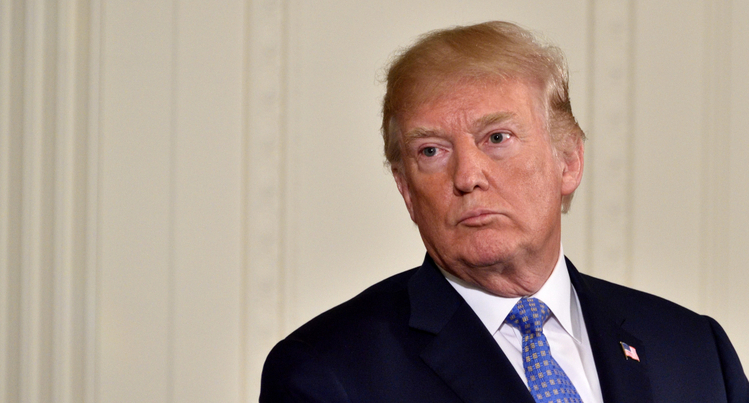Proposed Framework Would Expand US Government’s Discretion to ‘March-In’ on Patent Rights | Morgan Lewis
In the Biden administration’s pursuit of increasing affordability of healthcare and prescription drugs, the National Institute of Standards and Technology (NIST) released in December 2023 its draft framework on the US government’s exercise of “march-in” rights, i.e., its ability to unilaterally sublicense privately owned patents if such patents cover drugs and other products that were created using government funding. The draft framework would expand the government’s discretion to “march-in”—a power that it presently has never employed.
The Draft Interagency Guidance Framework for Considering the Exercise of March-In Rights (Draft Framework) was released by NIST on December 7, 2023. So-called “march-in” rights were established under the Bayh-Dole Act of 1980 and permit the US government to exercise its discretion to allow third parties to use a patent covering technology that was developed using federal funding (a sponsored patent) even though the government itself does not own the patent.
The Biden administration[1] hopes that the Draft Framework will reduce prescription drug prices as the Draft Framework would permit the US government to consider the reasonableness of the price of a product covered by a sponsored patent as a factor in assessing whether to exercise march-in rights. However, the Draft Framework is technology neutral, and various industries could be impacted including medical devices and other technologies.
NIST is currently seeking public comment on whether the Draft Framework provides clear guidance on the factors to be considered for the exercise of march-in rights. Further, NIST seeks comment on whether the Draft Framework supports the Bayh-Dole Act’s dual purpose of incentivizing American innovation and ensuring that products covered by sponsored patents are publicly available. The public has until February 6, 2024 to submit comments on the Draft Framework.[2]
THE BAYH-DOLE ACT AND MARCH-IN RIGHTS
Prior to 1980, if an invention was developed using federal funding, any patent for that invention was owned by the US government. While the government offered to grant nonexclusive licenses to such sponsored patents, the inventions of sponsored patents were often not commercialized.
To address this problem, the Bayh-Dole Act of 1980 permitted recipients of federal funding to fully own and license a sponsored patent. These recipients, typically universities, other nonprofits, and small businesses (contracting entities), could then commercially exploit the sponsored patents and thereby achieve the congressional intent of the Bayh-Dole Act.
However, there is one proviso: the US government also has an irrevocable, nonexclusive, royalty-free license to the sponsored patent, with the right to sublicense. The discretionary exercise of this right to sublicense (also referred to as “march-in” rights) is the target of the Draft Framework.
In the 43 years since the inception of the Bayh-Dole Act, the US government has only received eight petitions from third parties to exercise its march-in rights, all of which have been denied.[3] Thus, the US government has never exercised march-in rights, even where petitioners complained about pricing on a drug covered by a sponsored patent.[4]
ORIGINAL STATUTORY CRITERIA FOR EXERCISE OF MARCH-IN RIGHTS
The US government has discretion to exercise march-in rights if a contracting entity (or its licensee(s)) fails to show that it will
- take effective steps, within a reasonable time, to make the benefits of the sponsored invention “available to the public on reasonable terms”;
- reasonably alleviate health and safety needs;
- provide “public use specified by Federal regulations”; or
- favor US manufacture of goods or services covered by the sponsored patent.
Despite petitions asserting that the above criteria have been met in certain instances, the US government has never exercised its march-in rights.
POTENTIAL IMPACT ON CRITERIA FOR EXERCISE OF MARCH-IN RIGHTS
The Draft Framework proposes certain examples, clarifications, and changes to the statutory criteria that the US government must consider in determining whether to exercise march-in rights. Specifically, the Draft Framework was accompanied with a set of considerations and examples that purport to reframe the analysis.
These considerations are (1) whether the Bayh-Dole Act applies, (2) whether a statutory criterion is met, and (3) whether exercise of march-in rights would support the policy and objectives of the Bayh-Dole Act.
Consideration 1: What Is a ‘Subject Invention’?
The Draft Framework does not affect the substance of how a federal agency would ascertain whether a patented technology is a “subject invention” under the Bayh-Dole Act. A “subject invention” is defined as “any invention of the contractor conceived or first actually reduced to practice in the performance of work under a [government] funding agreement.” As such, if the patented technology does not qualify as a “subject invention,” then march-in rights cannot be exercised.
Consideration 2: Is a Statutory Criterion Met?
Regarding the second consideration, the Draft Framework proposes examples of when the four traditional criteria (noted above) would be met. These new examples are discussed in turn below.
(1) Practical Application: Has the contracting entity taken steps (or will take steps) to make the benefits of the invention “available to the public on reasonable terms”?
The Draft Framework provides guidance for three different scenarios: (1) subject inventions that have not yet been licensed (and the contracting entity has no plans to do so), (2) subject inventions that are licensed or subject to development by the contracting entity for commercialization, and (3) subject inventions that have already been commercialized.
For those subject inventions that are already being commercialized, the government is explicitly authorized under the Draft Framework to assess the price at which products using the subject invention are being offered for sale in the United States to ascertain whether such price is “unreasonably limiting availability of the subject invention to consumers or customers,” i.e., whether the price is too high.
(2) Alleviation of Health and Safety Needs: Is the subject invention needed to address an identified health or safety need not being reasonably satisfied by the contracting entity (or its licensees)?
The Draft Framework considers a number of factors in determining whether march-in rights are necessary to alleviate health or safety needs not being met by a contracting entity or its licensees. Of particular note, one factor asks whether the contracting entity or licensee is “exploiting a health or safety need in order to set a product price that is extreme and unjustified given the totality of the circumstances.”
The Draft Framework also clarifies that the inquiry is “not limited to reviewing price increases” alone, but “the initial price may also be considered if it appears that the price is extreme, unjustified, and exploitative of a health or safety need.”
(3) Public Use: Does a federal regulation require that the subject invention be used, including in or with another product available commercially?
Several factors, including inquiring whether there is “evidence that the contractor(s) or licensee(s) is restricting access or imposing barriers to access,” are considered for this statutory criterion.
(4) Preference for US Manufacturing: Has the contracting entity (or its licensee(s)) failed to meet its obligations under 35 USC § 204 to make reasonable efforts to manufacture products made from or with the subject invention in the United States?
The Draft Framework sets forth inquiries for exercise of march-in rights where the contracting entity or its licensee(s) fail to meet the requirements for attempting to domestically manufacture products incorporating subject inventions.
A federal agency may ask whether licensing agreements pertaining to the subject invention include a requirement that products made with or from the subject patent be “manufactured substantially” in the United States, whether such a licensing agreement may be amended to comply with 35 USC § 204, and whether the contracting entity or its licensee(s) have sought a waiver of the domestic manufacturing requirement if suitable US manufacturing capabilities cannot be retained.
Consideration 3: Does Exercising March-In Rights Fulfill the Objectives of the Bayh-Dole Act?
Finally, after establishing that Bayh-Dole applies and that a statutory criterion is met, the Draft Framework then asks whether the exercise of march-in rights would be consistent with the objectives of the Bayh-Dole Act, as set forth under 35 USC § 200. In particular, the Draft Framework focuses on two main objectives: promoting “the development of new products in the [United States]” and promoting the availability of those new products “to end-users or consumers in the [United States].”
In order to analyze whether these two objectives would be met, the following questions are set forth in the Draft Framework:
- Would exercising march-in rights “achieve practical application, alleviate health or safety needs, meet public use requirements, or meet manufacturing requirements”?
- Do other alternatives exist to “address the identified problem, and can those alternatives be pursued instead of or in parallel with any march-in proceedings”?
- What are the broad implications of exercising march-in rights?
To illustrate how the three-question framework could be used in a given situation, the Draft Framework provides eight exemplary hypothetical scenarios for considering factors under the second and third questions (with the understanding that in the hypotheticals the question of whether Bayh-Dole applies has already been answered in the affirmative). The authors commend the reader to a deeper review of those examples for specific guidance.[5]
CONCLUSION
Critics and proponents disagree on the third consideration of the Draft Framework, concerned with how to promote both US innovation (e.g., by allowing a patent owner to exercise the limited monopoly provided by its patent) and access to these innovations. The Biden administration argues that expanding government discretion for using march-in rights will make prescription drugs more affordable for Americans.
However, the Draft Framework is technology neutral, and various industries could be impacted, including medical devices or other technologies. What’s more, even if a version of the Draft Framework is ultimately adopted, it is unclear whether it will lead to the government exercising march-in rights on a more regular basis.
[1] On December 7, 2023, the White House released a statement in connection with the Biden administration’s stated goal of increasing affordability of healthcare and prescription drugs, announcing the Draft Interagency Guidance Framework for Considering the Exercise of March-In Rights (the Draft Framework). The White House stated that the Draft Framework seeks to “promote lowering prescription drug costs for American families” by providing guidance to “agencies on the exercise of march-in rights on taxpayer-funded drugs and other inventions, which specifies that price can be a factor in considering whether a drug is accessible to the public.” See Fact Sheet: Biden-Harris Administration Announces New Actions to Lower Health Care and Prescription Drug Costs by Promoting Competition (last accessed Dec. 21, 2023).
[2] See Request for Information Regarding the Draft Interagency Guidance Framework for Considering the Exercise of March-In Rights, 88 Fed. Reg. 85,593 (December 8, 2023).
[3] See March-In Rights and U.S. Global Competitiveness (last accessed Dec. 27, 2023).
[4] See id. (noting that “petitioners asked the NIH to exercise march-in rights due to concerns over the high price of an HIV/AIDS treatment, Norvir/ritonavir, and a glaucoma treatment, Xalatan/Latanoprost, but the agency declined because it deemed each drug was available to the public on a sufficient basis”).
[5] See Would march-in support the policy & objective of Bayh-Dole, considering the specific case and broader context? Request for Information Regarding the Draft Interagency Guidance Framework for Considering the Exercise of March-In Rights (last accessed Dec. 21, 2023).
[View source.]






